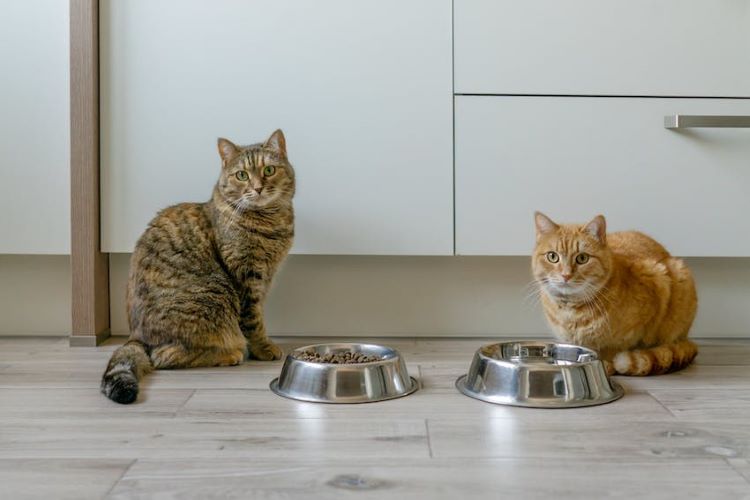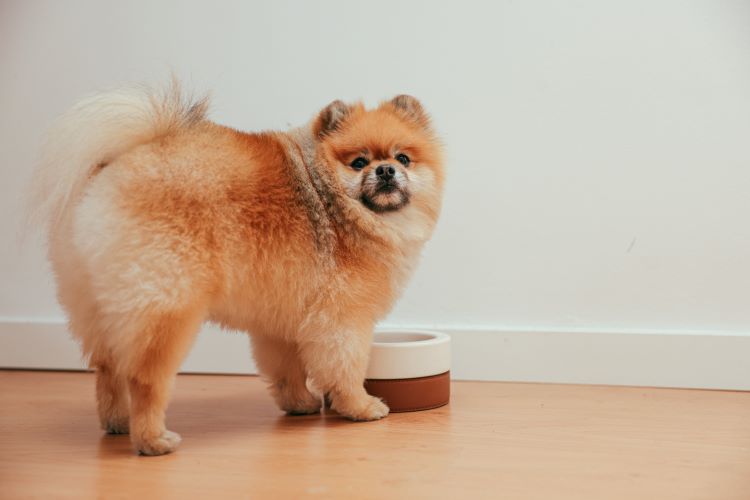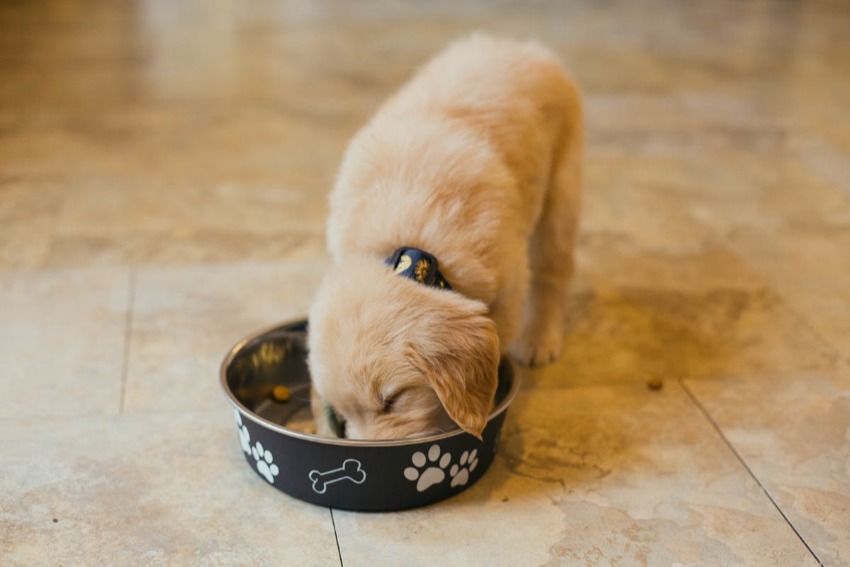Ready to help treat your pet to a healthy life?
How Often You Should Clean Your Pet’s Bowl
By : Brianna Gunter | Published Feb 1, 2024

You take great care of your pet, but how often are you cleaning their food bowl? Or their water bowl, for that matter? Since dog and cat bowls can often go days or even weeks before looking visibly dirty, cleaning them often goes overlooked. However, it is an important aspect of responsible pet ownership. In fact, the frequency with which you clean your pet's bowl can directly impact their health and well-being.
Because cleaning pet bowls isn’t typically included on lists of pet owner duties, you might not realize all of the potential hazards associated with a dirty food or water bowl. No need to freak out if you haven’t been cleaning your pet’s bowl regularly — there’s no better time to start than the present! Furthermore, reading this article is a good indicator that you’re on the right path.
While you should always consult with your pet’s veterinarian about their specific health risks, we’ll go over how often you should be cleaning your pet’s food and water bowls. We’ll also discuss the various dangers associated with not doing so and some tips for maintaining a clean feeding environment in general. Ready? Let’s get started!
How often should I clean my pet’s food bowl?
The frequency of cleaning your pet's bowl depends on the type of food you provide as well as your pet's individual needs. Here are some general guidelines:
- Dry food bowls — for dog and cat bowls used to serve dry food, a thorough cleaning at least once a day is recommended. Remove any leftover food, wash the bowl with pet-safe detergent, and rinse it thoroughly. If you don’t like hand-washing, get a dishwasher-safe bowl to make things even easier.
- Wet or canned food bowls — bowls used for wet or canned food should be cleaned after every meal. Bacteria multiply rapidly in moist environments. Leaving remnants of wet food in the bowl can lead to a bacterial breeding ground.
- Water bowls — Like pet food bowls, water bowls should be cleaned every day. Stagnant water can harbor bacteria, and regular cleaning ensures your pet has access to clean, fresh water. Consider using a dishwasher-safe bowl for easy cleaning.
- Water fountains — pet fountains have become increasingly popular, especially for cats. But although they come with filters, they still need to be cleaned. A good rule of thumb is to empty and wash the fountain thoroughly at least once a week (try every time you refill) and every time the water looks visibly dirty. Be sure to check the filters too and replace according to manufacturer recommendations (for example, every few weeks).
Keep in mind that if your pet has specific health issues or allergies, your veterinarian may recommend more frequent cleaning. Additionally, puppies, kittens, and older pets may require extra cleaning of their bowls and food areas in general.

Risks of not cleaning your pet’s bowl regularly
Think about it: as a human, you eat off of clean plates and use clean utensils every day. For the vast majority of people, doing otherwise is both unappealing and unsanitary. Why should it be any different for your pet?
Since pets may not perceive things the same way we do (though some pets will indeed avoid dirty food or water bowls), it’s up to us to keep them safe from the following dangers:
- Bacterial growth — Pet food and water bowls create an ideal environment for bacteria to thrive. Leftover bits of food and the moisture from wet food can combine to form a breeding ground for harmful bacteria such as Salmonella, Listeria, MRSA, and E. coli.
- Mold and mildew — Residual moisture in bowls (and splash from enthusiastic pets) can also lead to the growth of mold and mildew. These fungi can produce mycotoxins that are harmful to both pets and humans. Inhaling or ingesting these toxins can cause a range of health issues in both dogs and cats.
- Parasites — Dirty pet bowls can attract pests like flies and ants, which can carry parasites. These parasites may then infest your pet's food, leading to potential health problems.
- Food quality deterioration — Dry pet food left in a bowl for an extended period may lose its nutritional value and flavor. This can impact your pet's diet and overall health.
- Skin issues and allergies — Some pets may develop skin or allergy issues if they come into contact with bacteria or mold present in a dirty bowl. Skin irritation, itching, or other allergic reactions can be easily avoided by maintaining a clean feeding area.
Tips for maintaining a clean pet bowl
Giving your pet a clean feeding area doesn’t have to be hard work. Here are some easy tips for keep dog and cat bowls clean on a daily basis:
- Use stainless steel or ceramic bowls — In addition to some pets having aversions to plastic (sensitive dogs and cats may have negative reactions like skin irritation), stainless steel and ceramic are less porous than plastic, making it harder for bacteria to hide. Conveniently, these materials are also dishwasher safe.
- Get multiple bowls — Don’t want to clean bowls as often or don’t have time? Consider having a set of bowls to rotate, ensuring that your pet always has access to a clean one. This is especially helpful for busy pet owners who may not have time to clean after every meal.
- Regular inspections — Periodically inspect your pet's bowls for any signs of wear, cracks, or damage. Damaged bowls can harbor bacteria and are more difficult to clean effectively.
- Establish a cleaning routine — Make cleaning your pet's bowls a part of your daily routine. Whether it's after each meal or before bedtime, consistency is key to maintaining a healthy feeding environment.
- Store dry food properly — If you feed your pet dry food (kibble), store it in a cool, dry place in a sealed container. This helps prevent contamination and ensures the food remains fresh.
- Store canned/wet food properly — Leftover canned or “wet” food should be covered, refrigerated, and use within three days. Likewise, do not let it sit out indefinitely in your pet’s bowl. Throw away anything not eaten after an hour to avoid exposing your pet to harmful bacteria.

Cleanliness goes beyond the bowl
While you’re cleaning your pet’s bowls daily, take a look at their feeding area in general. Many pets are enthusiastic eaters (to put it gently), and their bowls are often surrounded by splatter and crumbs. Not only can this lead to an ant or fly problem in your home, but young children as well as pets may be tempted to eat some of the mess.
Because of this, it’s important to clean your dog or cat’s bowl area in general every time you clean the bowls themselves. Using a mat below your pet’s feeding station can make it easier to clean up after them — just pick up the mat and brush off any food remains, then wipe it down with a pet-safe cleaner. Depending on the material, some designs can even be put in the dishwasher along with the bowl!
Remember, regular cleaning not only prevents the spread of harmful bacteria but also ensures that your pet receives the nutrition they need without the risk of contamination. By adopting good hygiene practices and incorporating bowl cleaning into your daily routine, you contribute to your pet's overall health and well-being.
Take a step further with protecting your pet’s health by exploring your pet insurance options if you don’t already have coverage.
